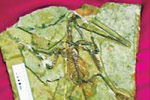Art
Ming and Qing furniture
Updated: 2007-07-10 16:06
(Chinaculture.org)
The Ming (1368-1644) and early Qing (1644-1911) dynasties were ages of expansion and great prosperity in Chinese history. The most sought-after furniture made of the choicest timber was as precious as gold. Ming furniture is treasured for its comfortable design, simplicity and elegance, while Qing furniture impresses people with its grandeur and pageantry. Though different in style, Ming and Qing furniture represents the zenith of classical Chinese furniture making because of the use of hardwood material and superb craftsmanship.
 |
Material and style
The source of timber largely decides the quality of the furniture. Ming and Qing classical Chinese furniture is no exception. The imported tropical hardwood, mostly from southeast Asia, was the most choice wood for Ming and Qing furniture. Zheng He, a renowned Ming official, started his first maritime expedition in 1405 under the patronage of the emperor. During the subsequent 28 years, he and his fleet had six more trade journeys, reaching 37 countries around the world. A large number of tropical hardwoods, timber with great hardness and density, were taken back to China. Craftsmen in the Ming Dynasty used these valuable hardwoods like sandalwood and rosewood to make furniture for the royal family.
Timber can be roughly classified into four color-categories in descending order of hardness and value: black, yellow, red, and white. Black stands for red sandalwood; yellow for yellow rosewood; red for blackwood, and white for other ordinary timber.
 |
Judging by hardness and density, hardwoods rank among the top. Sandalwood, rosewood, and blackwood are all considered the best hardwoods. The choicest hardwoods are mainly distributed in southeast Asia as well as in South China. They're rare and expensive, even reputed as "Golden Trees," because they usually takes up to hundreds of years to mature.
Red sandalwood, the rarest timber
The purplish-black red sandalwood is hard, heavy, and sinks easily in water. The Chinese have long considered it the most rare timber in the world because it only grows several centimeters in a hundred years. A Chinese table made of red sandalwood in the 18th century was auctioned off for the astronomical price of more than $35 million USD in 1994 at the New York-based Sotheby's auction house. Even today, it remains a symbol of wealth for most Chinese to have a suite of red sandalwood furniture.
|
 |
Red sandalwood furniture does not need to be lacquered. It looks silky only when waxed, allowing the grain to stand out and the natural beauty of the wood to be the main focus of the piece. Impervious to insects, and acids, red sandalwood furniture as well as handicrafts can be kept in good condition for a thousand years. More than its decorative and practical functions, red sandalwood is also medically significant. Viewed as a precious traditional Chinese medicine, it can be made into chairs or sofas with medical benefits.
Comfort and simplicity of Ming furniture
An important style feature of the Ming furniture is its elegance and simplicity. Simple lines and minimal decoration serve as a foil to the natural beauty of the wood. However, this meaningful simplicity was achieved without compromising comfort.
|
 |
The pursuit of comfort was reflected in such details as curves, lines, height, and size. The height of chairs and benches ranged from 40 centimeters to 50 centimeters, suitable for the legs to drop comfortably. Superb joinery skills were especially reflected at the joints, where only mortise and tenon, instead of nails, were used. The connected parts of furniture were exclusively tightened with glue made from the swimming bladders of sea fish. This type of natural glue, which was sophisticatedly processed, differed from its chemical counterparts and was health friendly. The extremely sticky natural glue and remarkable mortise and tenon joints together ensured the fixedness of the Ming furniture that has lasted for long.
Specials

President Hu visits the US
President Hu Jintao is on a state visit to the US from Jan 18 to 21.

Ancient life
The discovery of the fossile of a female pterosaur nicknamed as Mrs T and her un-laid egg are shedding new light on ancient mysteries.

Economic Figures
China's GDP growth jumped 10.3 percent year-on-year in 2010, boosted by a faster-than-expected 9.8 percent expansion in the fourth quarter.